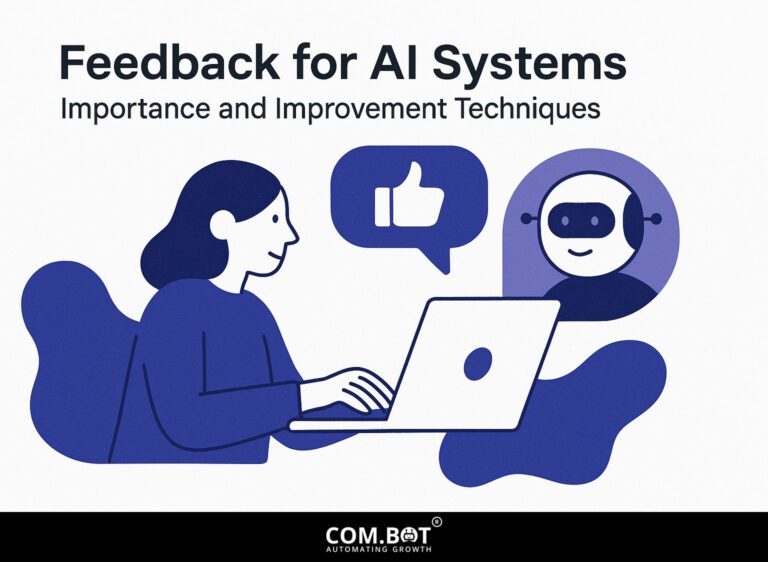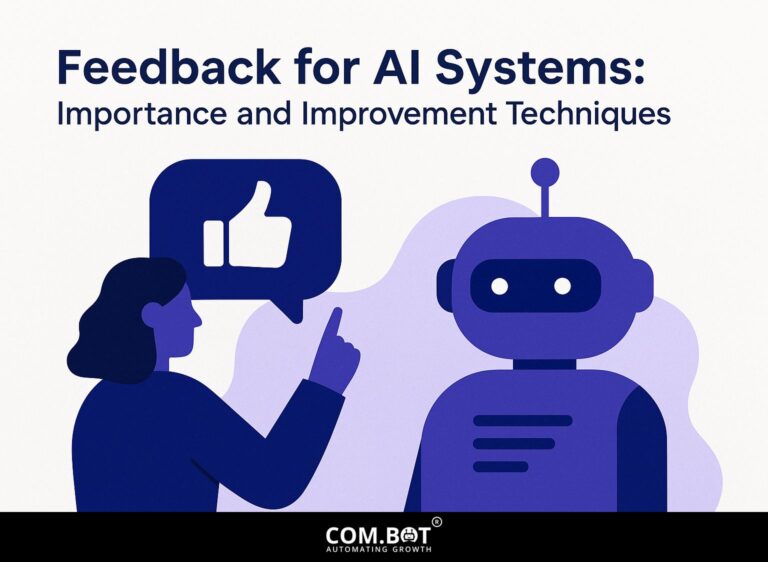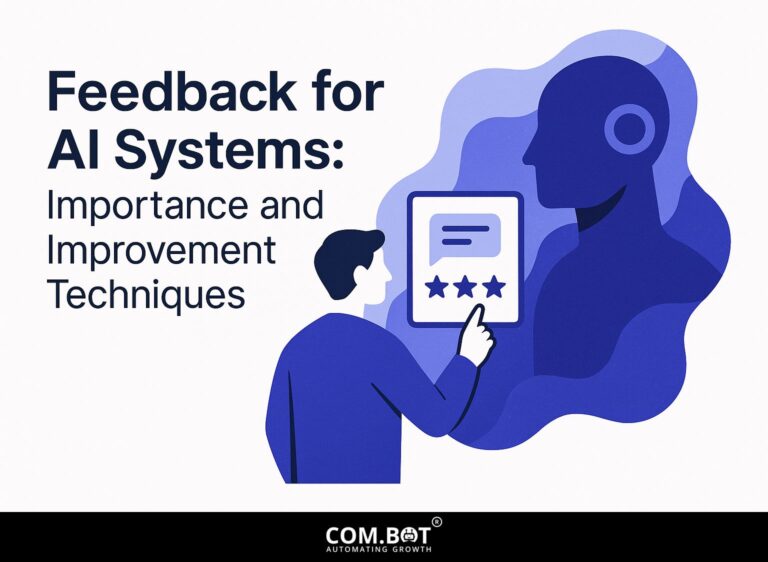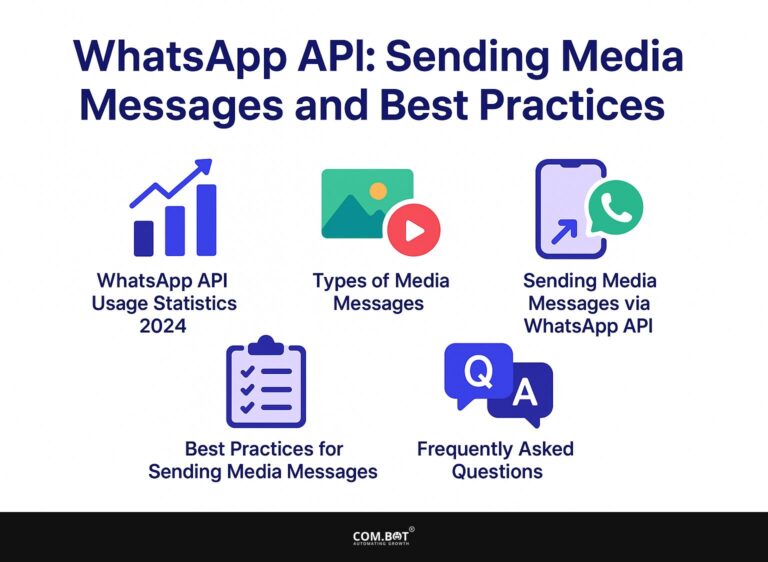Feedback for AI Systems: Importance and Improvement Techniques
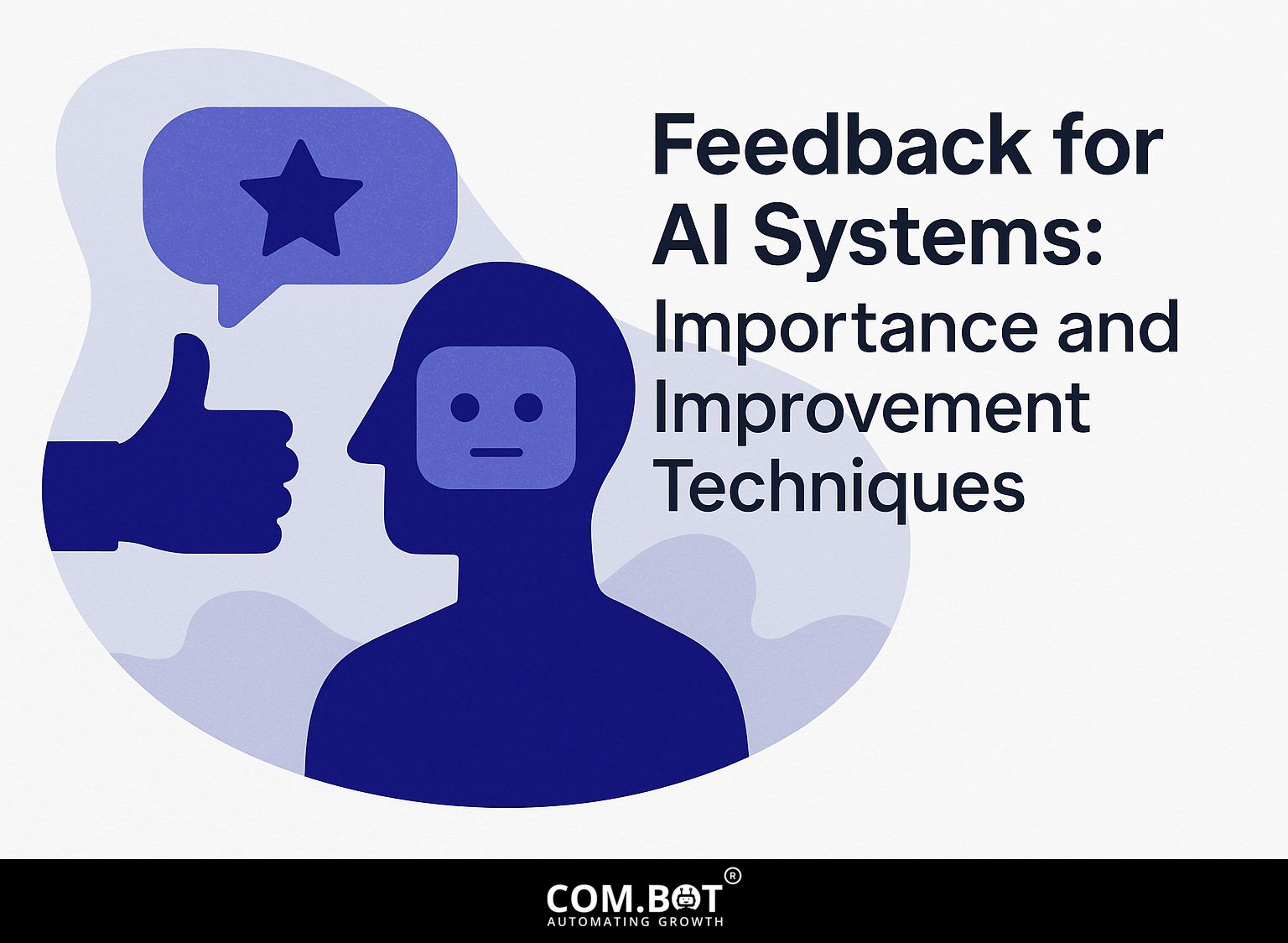
In artificial intelligence, human feedback is important for improving AI systems. By setting up strong feedback systems, we can improve machine learning models and their ability to adjust, especially in situations involving reinforcement learning. Tools like Label Studio facilitate this process, enabling effective data collection and analysis. This article discusses the importance of human involvement in AI, different feedback methods, and useful ways to make systems work better, so your AI develops to satisfy user demands.
Key Takeaways:
- 1 AI Feedback System Statistics
- 2 Types of Feedback Mechanisms
- 3 Importance of Feedback for AI Systems
- 4 Techniques for Collecting Feedback
- 5 Implementing Feedback in AI Development
- 6 Challenges in Feedback Implementation
- 7 Future Directions
- 8 Frequently Asked Questions
- 8.1 What is the importance of feedback for AI systems?
- 8.2 What are the benefits of providing feedback to AI systems?
- 8.3 How can feedback be used to improve AI systems?
- 8.4 Why is it important for AI systems to receive diverse feedback?
- 8.5 What are some techniques for providing effective feedback to AI systems?
- 8.6 How can AI systems be made to include feedback loops?
Definition and Scope
AI feedback includes different ways for AI systems to get input, such as feedback directly from users and methods that collect data automatically.
These methods can include gathering user preferences through surveys or monitoring interaction patterns to assess performance metrics like engagement rates and error frequency.
For example, using tools like Google Analytics helps monitor how users interact with applications, showing which features they find most useful.
Incorporating sentiment analysis via machine learning models can interpret user comments for qualitative feedback. This approach ensures the AI reliably meets user needs, making apps more efficient and simple to use.
Importance of Feedback in AI
Providing feedback improves how well models work and reduces their errors. It helps AI systems learn from previous interactions and change based on user needs.
One effective method for incorporating feedback is through reinforcement learning, where an AI model receives rewards or penalties based on its performance. For instance, a chatbot can improve its responses by analyzing user ratings for each interaction.
Utilizing human-in-the-loop systems allows real-time feedback, enabling rapid model adjustment. Tools like TensorFlow and PyTorch allow developers to make regular improvements to algorithms by incorporating feedback.
By reducing mental biases using varied feedback sources, AI can create fairer and more effective ways to make decisions. For an extensive analysis of this trend, our comprehensive study of feedback improvement techniques examines different methodologies.
AI Feedback System Statistics
AI Feedback System Statistics
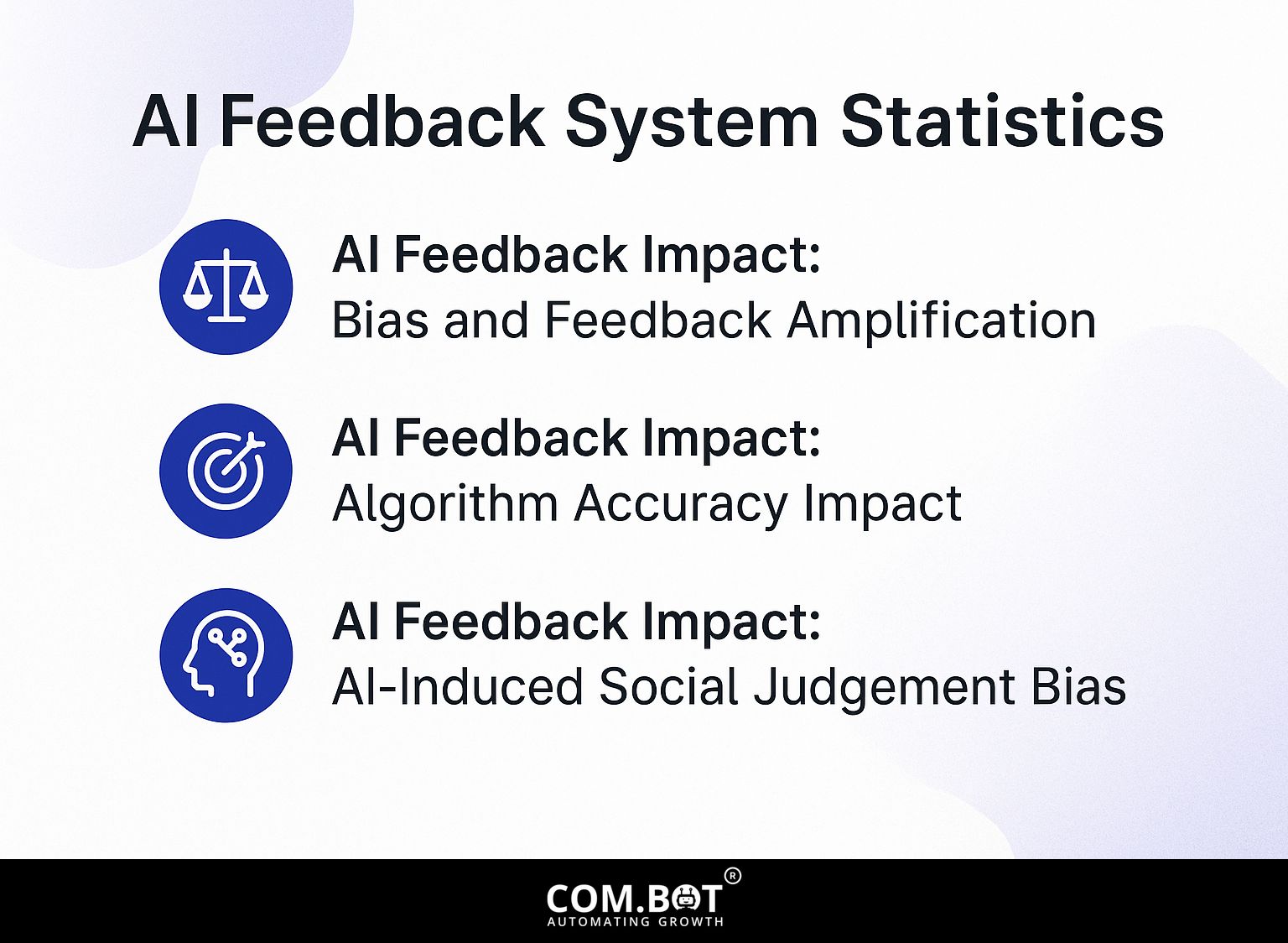
AI Feedback Impact: Bias and Feedback Amplification
AI Feedback Impact: Algorithm Accuracy Impact
AI Feedback Impact: AI-Induced Social Judgement Bias
The AI Feedback System Statistics shows how AI impacts human choices, prejudices, and correctness in feedback systems. This information is important for knowing the possible effects of using AI in areas where human judgment and decision-making are essential.
AI Feedback Impact reveals significant findings regarding bias and amplification. Initially, 53.08% of participants showed bias, which AI systems amplified to 65.33%. When exposed to biased AI, human bias increased to 56.3%. Interestingly, 32.72% of participants altered their decisions when AI feedback disagreed with their initial choices, demonstrating AI’s influence on human judgment.
Algorithm Accuracy Impact Research shows that accurate AI can reduce errors by 1.55 times, yet bias-induced noise error remains high at 50%. Moreover, 56% Many participants mentioned that their decisions were influenced by AI using exact data, showing that while AI can make decisions more accurate, biases in AI systems can significantly distort outcomes.
AI-Induced Social Judgement Bias highlights changes in selection preferences due to AI exposure. Before AI exposure, 32.36% of participants selected white men, which increased to 38.2% post-AI exposure. Conversely, selection of Asian women decreased from 20.24% to 17.14% after AI interaction, indicating AI’s potential to reinforce existing social biases rather than mitigating them.
In summary, the AI Feedback System Statistics Highlights the two-sided role of AI in feedback systems: it can lower mistakes and guide decisions well, but it can also increase biases and shape social judgments. It is essential to design and use AI thoughtfully to reduce bias and improve human decision-making.
Types of Feedback Mechanisms
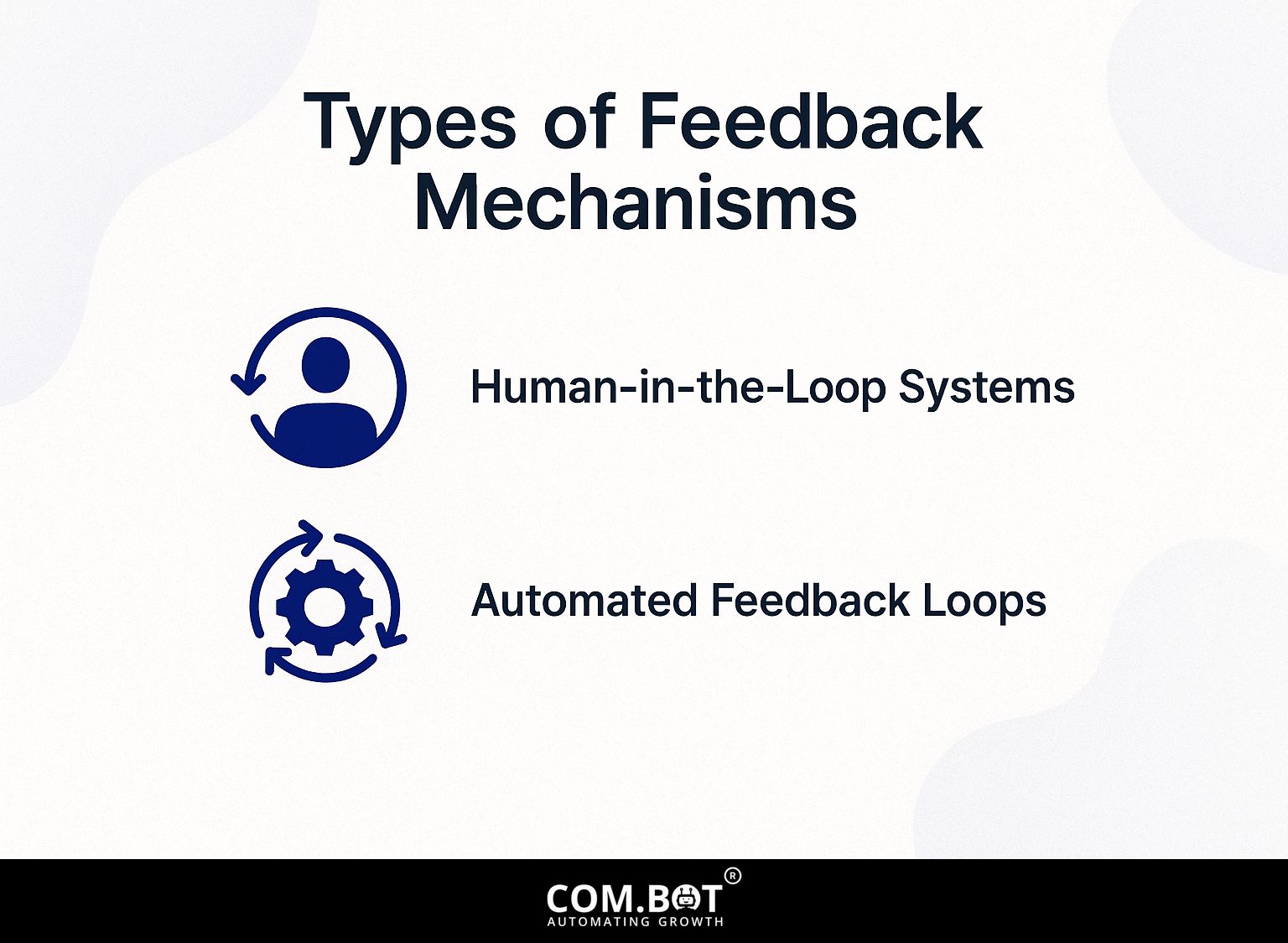
AI systems use two main types of feedback processes: systems where humans actively participate to provide input, and systems that use algorithms to automatically process feedback.
Human-in-the-Loop Systems
Human-in-the-loop systems use human choices to train AI models, ensuring AI results align more closely with user desires through repeated feedback.
To implement this effectively, start by identifying the data collection method, such as using Label Studio for data annotation. Here, you can sort and label data to improve AI results.
Involving a varied group of people to review improves the feedback quality and tackles ethical issues such as bias. For instance, a health chatbot might undergo regular reviews by medical professionals, allowing it to adjust responses based on real-world scenarios.
Working together in this way increases accuracy and builds trust between people and AI.
Automated Feedback Loops
AI systems can improve themselves by collecting performance information and changing their algorithms without manual intervention.
These loops function by continuously monitoring the system’s output and comparing it against predetermined goals or benchmarks.
For example, Amazon SageMaker makes it easy by providing built-in algorithms that can examine model performance measures such as accuracy or exactness over time.
By implementing tools like SageMaker, users can set up monitoring metrics to automatically trigger retraining processes when performance dips below a specific threshold.
Models can improve their predictions as they get new data, without needing manual changes.
Importance of Feedback for AI Systems
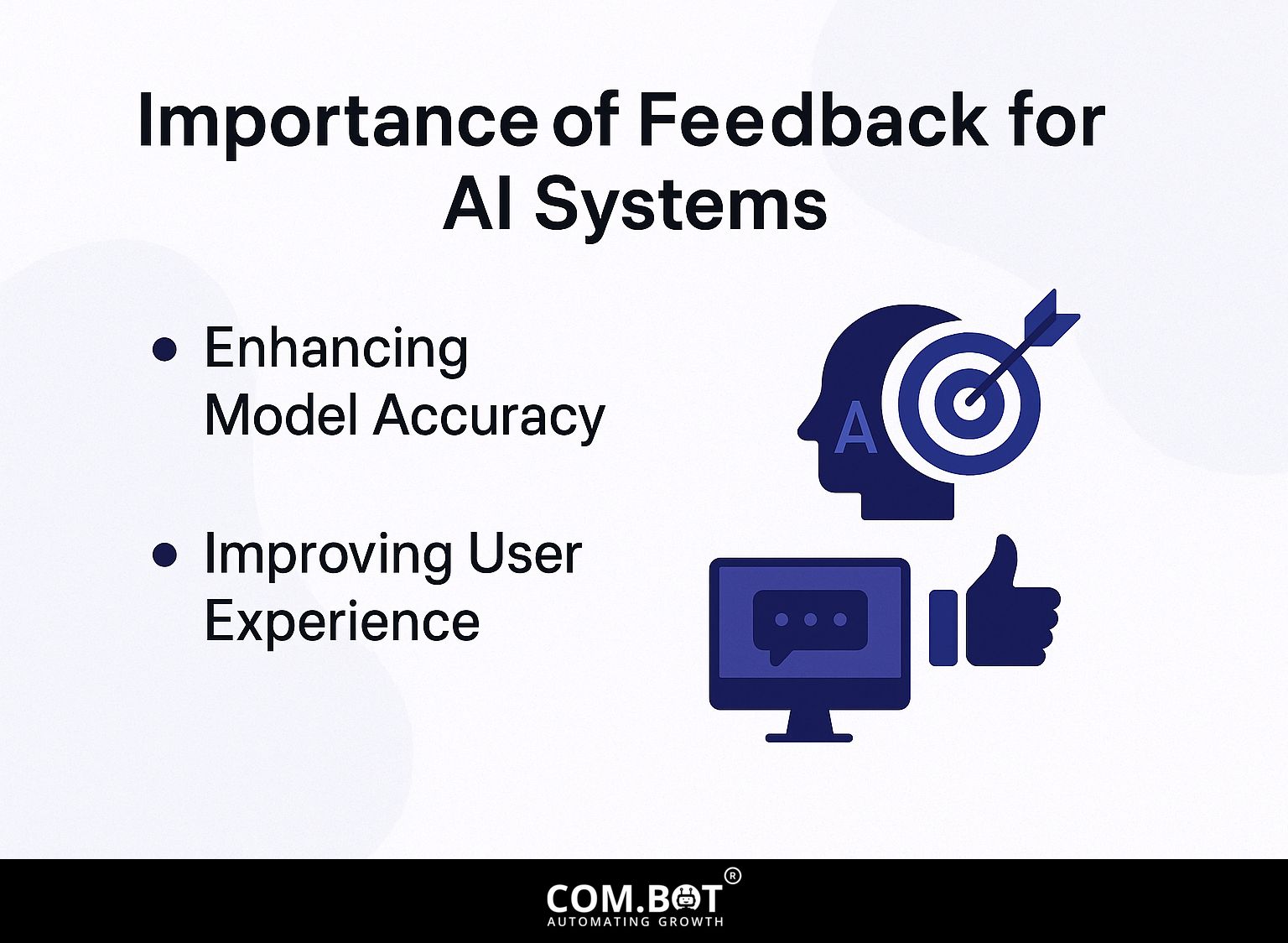
Getting feedback improves the accuracy of models and makes user experiences better, leading to more effective AI applications.
Enhancing Model Accuracy
Incorporating feedback improves model accuracy by refining prediction models through continuous training data updates based on user interactions.
For example, companies like Netflix and Amazon use user ratings and browsing history to improve their recommendation systems. They use repeated training techniques, where models get updated often with new data that shows what users like.
They use methods like data cleaning and getting rid of outliers to make predictions more reliable.
Using user feedback tools, like thumbs up or down, lets algorithms adjust quickly to what users want. This approach has increased user engagement and satisfaction on their platforms.
Improving User Experience
Effective ways to give feedback improve how users interact with AI systems by allowing these systems to change based on how users act and what they like.
Platforms like Spotify analyze how users listen to music and use this information to improve their service. For example, if a user skips a song or saves a track, Spotify’s algorithms adjust their playlists based on these actions.
Netflix suggests shows to viewers based on their ratings and what they’ve watched before, helping them find new shows easily.
To use these methods, you can use tools like Google Analytics to monitor user actions and Mixpanel to gather useful information.
By regularly changing content based on user feedback, organizations create experiences that feel personal, keeping users interested and happy.
Techniques for Collecting Feedback
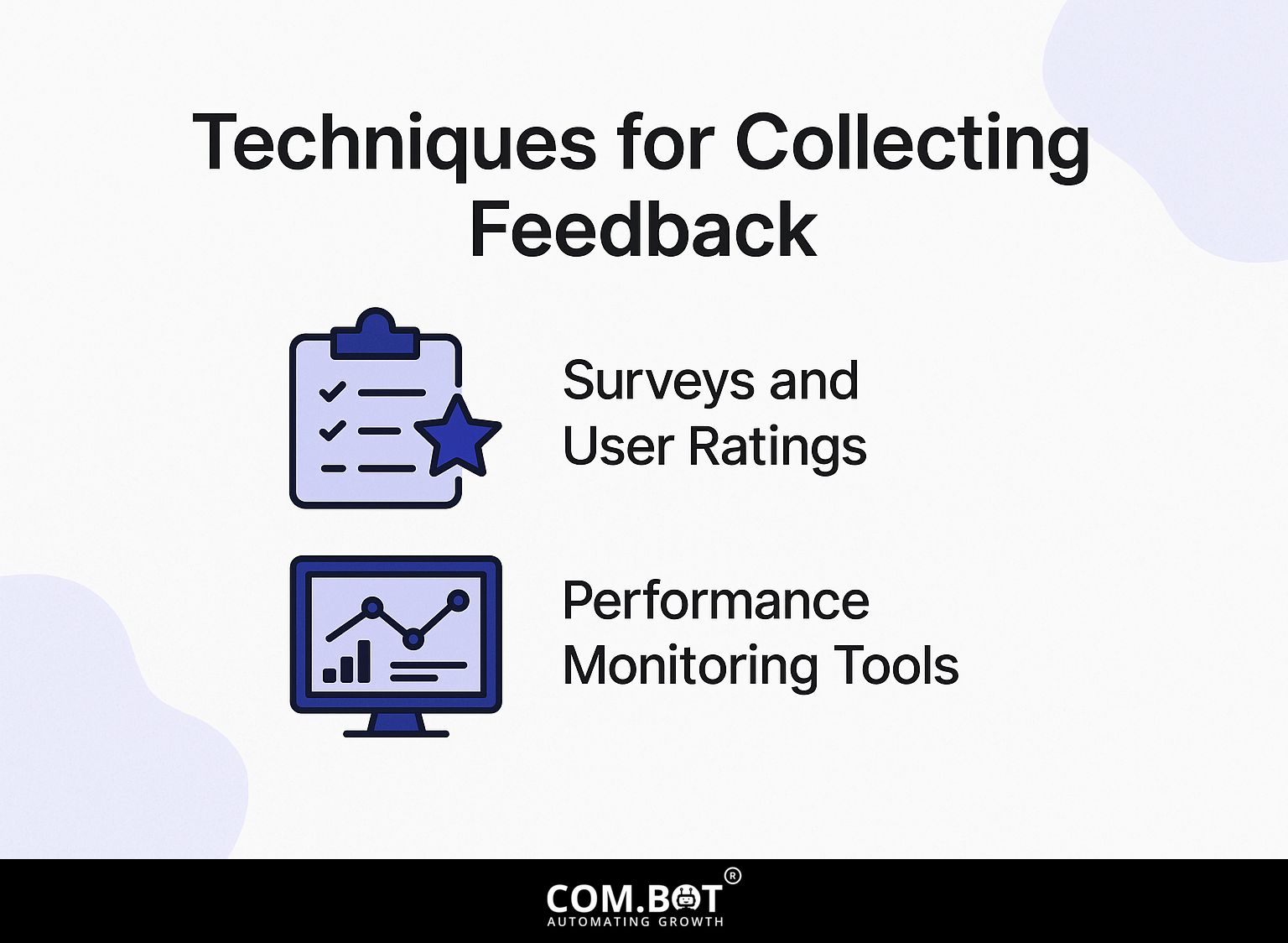
You can gather feedback using different methods like surveys, user ratings, and tools that watch how users interact. Additionally, understanding the importance and improvement techniques of feedback for AI systems can enhance the effectiveness of these methods.
Surveys and User Ratings
Surveys and user ratings are simple methods to gather user feedback, giving a clear view of user satisfaction and where improvements are needed.
To create effective surveys, tools like SurveyMonkey and Google Forms are very helpful.
Start by formulating clear, concise questions that target specific user experiences, such as satisfaction with your product or service. Include different question types-multiple choice for quick answers and open-ended for detailed responses.
Keep surveys short, with fewer than 10 questions, to get more people to finish them. Send your survey through email or social media and offer discounts or prizes to increase participation.
Performance Monitoring Tools
Performance monitoring tools are essential for tracking user interactions and measuring the effectiveness of AI systems in real-time.
Two strong choices are Google Analytics and Mixpanel. Google Analytics gives information about how users interact with your site, such as how long they stay and how many pages they visit. Mixpanel tracks events, letting you examine particular user actions.
To get the most out of these tools, set clear goals, such as increasing user engagement by 20% or tracking feature adoption rates.
Regularly review metrics like conversion rates and user retention to adjust your strategies effectively. This proactive approach can greatly improve how well your AI systems work and how users feel about them.
Implementing Feedback in AI Development
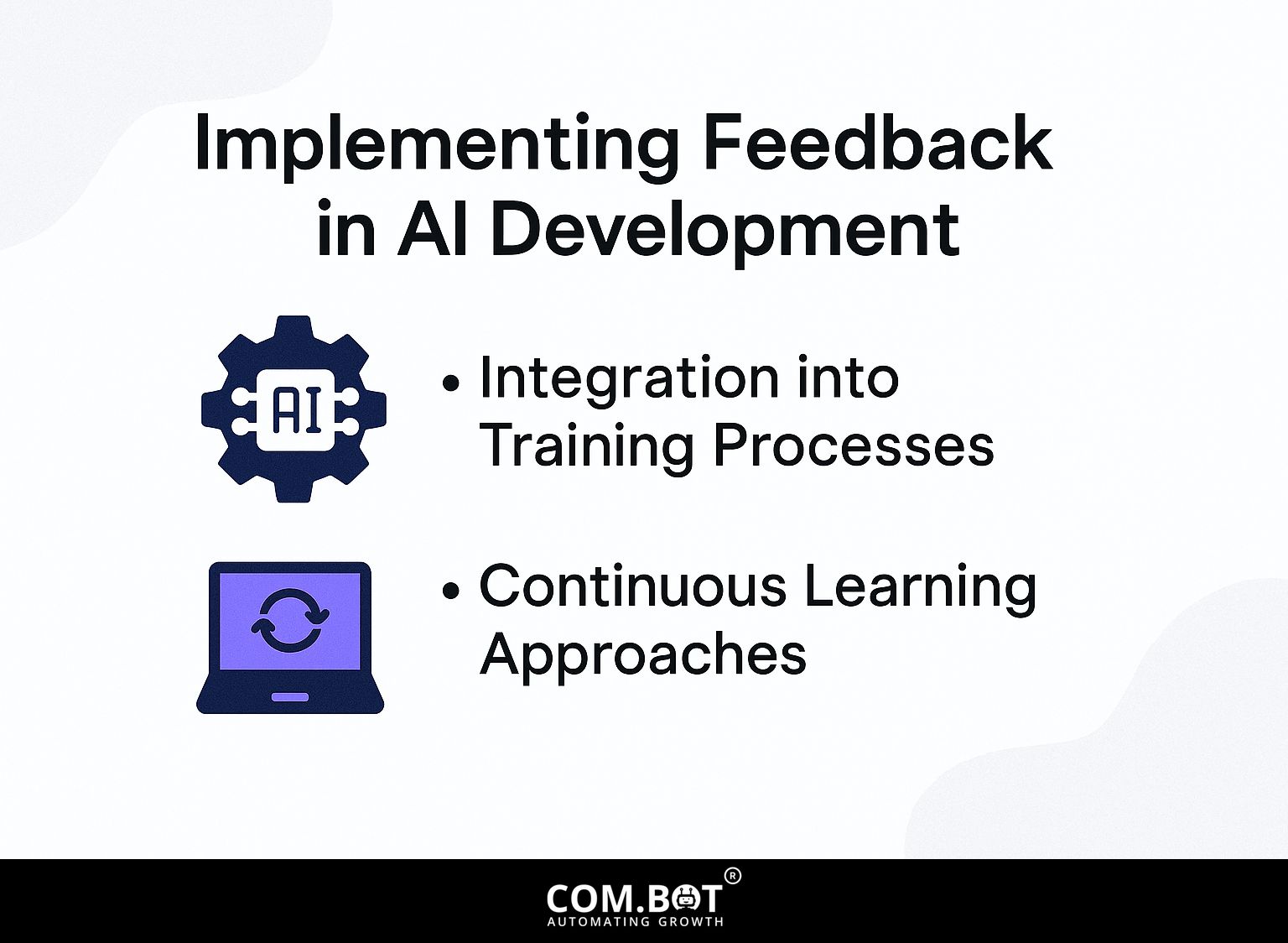
Including feedback in AI development means using user suggestions during training and using ongoing learning techniques. For deeper insights into the significance and enhancement methods, learn more about the importance and improvement techniques for feedback in AI systems.
Integration into Training Processes
Adding feedback into training helps AI models keep improving by using repeated feedback to help them learn better.
For effective feedback integration, businesses should implement structured feedback loops. Start by gathering user input through surveys or direct interactions, then use tools like Google Forms or Typeform to collate the data.
For instance, a retail AI could analyze customer reviews to adjust its recommendation algorithms. Next, use machine learning libraries like TensorFlow to adjust model parameters using feedback.
Update your models regularly, every few weeks, to make sure they have the newest data. This helps improve their performance and meet users’ needs.
Continuous Learning Approaches
Continuous learning methods use feedback loops to let AI systems change and improve on their own, making them more relevant and accurate.
For example, platforms like Coursera use a learning method that changes based on how users interact with it and their performance data. They revise the course material when necessary, ensuring that learners receive personalized content suited to their advancement.
In the same way, Duolingo uses feedback from users to improve its language courses, which helps keep more learners using the app. By using tools like TensorFlow for machine learning and Google Analytics to track user activity, these platforms create an engaging learning environment that grows over time, keeping users interested and enhancing the educational experience.
Challenges in Feedback Implementation
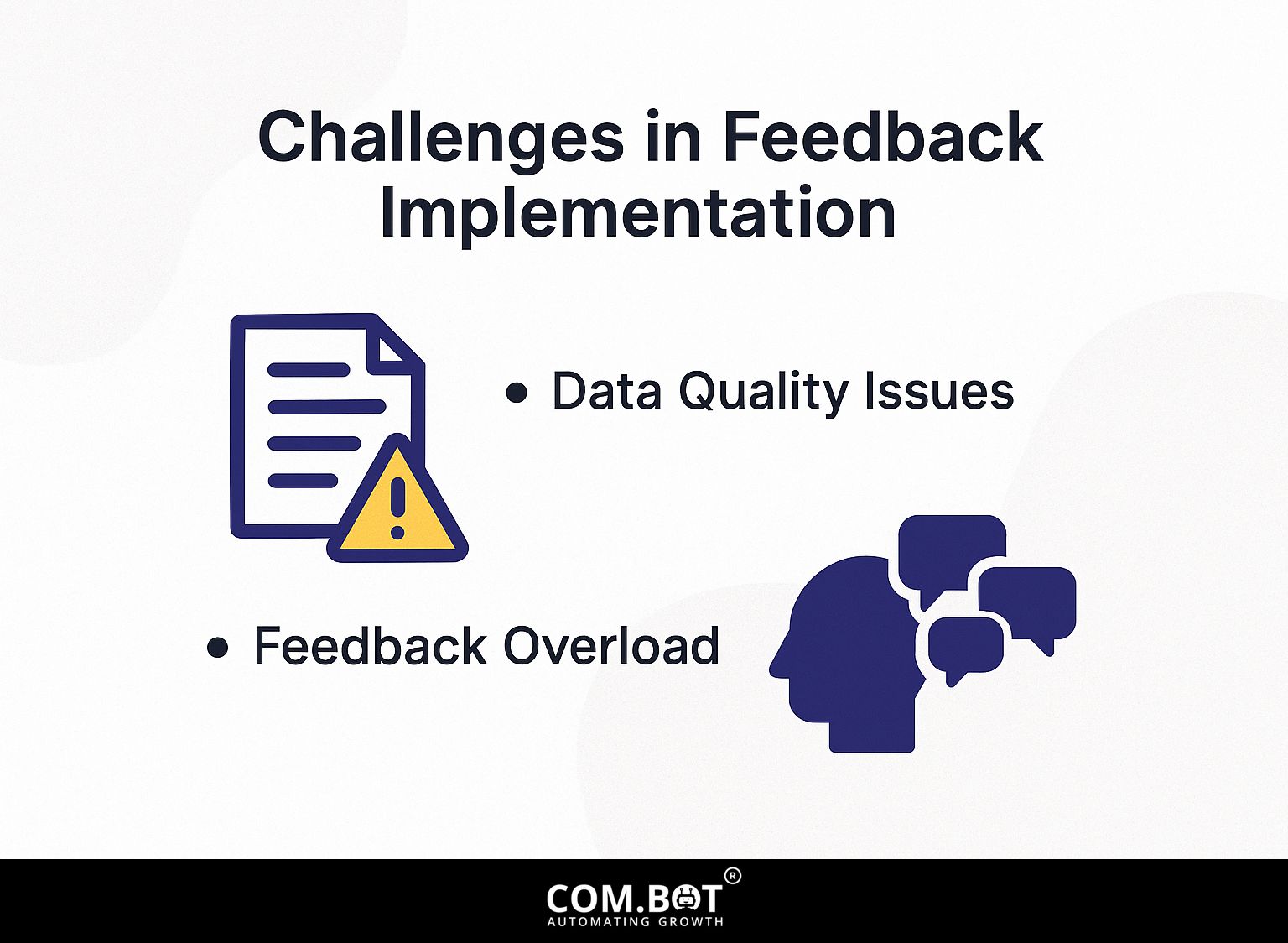
Even though it’s important, using AI feedback comes with problems like poor data quality and the chance of getting too much feedback, which can hurt how well the system works.
Data Quality Issues
Problems with data quality happen when feedback is wrong, impacting the reliability of AI systems and their decisions.
To combat poor data quality, implement regular audits and validation processes. Start by establishing clear criteria for data accuracy and completeness.
Schedule quarterly audits to review user feedback, ensuring it aligns with actual outcomes. Use tools like Talend or Informatica for data integration and cleansing, which can help identify inconsistencies.
Get feedback from users about how useful the data is and change it according to their responses. This forward-thinking method preserves strong data accuracy and improves how well AI programs work.
Feedback Overload
Feedback overload occurs when systems collect too much input without the capacity to analyze or implement changes, potentially diminishing user experience.
To manage feedback effectively, start by setting limits on channels. For instance, designate a primary platform, like a dedicated feedback email or a survey tool such as SurveyMonkey. This reduces scattered input from various sources.
Next, set up a clear analysis process: consider tools like Trello for sorting feedback categories and priorities. Schedule regular reviews, perhaps monthly, to analyze trends.
This way, you’ll get useful information without being swamped by too much feedback. Your feedback management plan should focus on being clear and actionable.
Future Directions
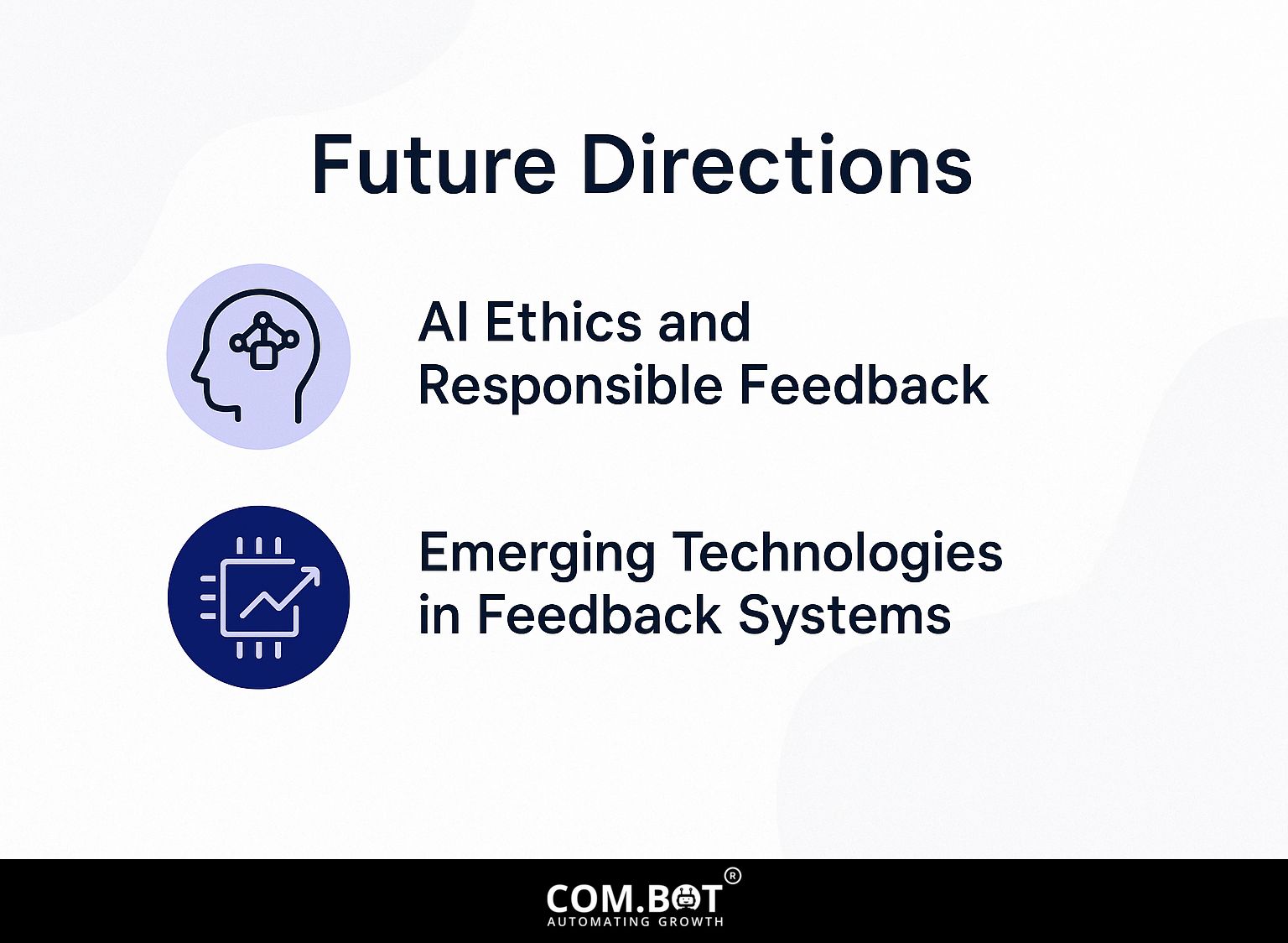
The next steps for AI feedback involve tackling ethical issues and using new technologies to build feedback systems that can grow easily. Worth exploring: Feedback for AI Systems: Importance and Improvement Techniques, which delves deeper into strategies that enhance the effectiveness and scalability of AI feedback mechanisms.
AI Ethics and Responsible Feedback
AI ethics plays a critical role in shaping responsible feedback practices, ensuring that user data is handled with integrity and respect.
To achieve this, organizations should follow clear guidelines, such as the EU’s General Data Protection Regulation (GDPR) and the IEEE Ethically Aligned Design rules.
Setting up ways for users to give consent is important; for example, allowing users to choose if they want to share their data can make things clearer.
Regularly auditing feedback mechanisms for biases and inaccuracies strengthens accountability, ensuring that AI systems reflect users’ concerns responsibly.
By prioritizing user input management through these ethical practices, companies can build trust and encourage constructive feedback loops in their AI systems.
Emerging Technologies in Feedback Systems
New technologies are changing feedback systems by using machine learning to make automated feedback better in various AI tools.
One notable advancement is the use of sentiment analysis tools, such as MonkeyLearn and Lexalytics, which evaluate user feedback and categorize emotions.
Platforms like Qualtrics and SurveyMonkey offer real-time analytics that help organizations understand and act on feedback instantly. By integrating chatbots powered by AI, companies can also gather immediate responses while maintaining engagement.
These technologies make data collection easier and give better information, which helps speed up cycles in AI development and improves what users experience.
Frequently Asked Questions
What is the importance of feedback for AI systems?
Feedback is important for AI systems because it helps them learn and get better at their tasks over time. AI systems need feedback to handle different situations and make correct choices.
What are the benefits of providing feedback to AI systems?
Giving feedback to AI systems can make them more accurate, work faster, and help them make better choices. It also supports ongoing learning and progress, which makes the AI system more trustworthy and useful.
How can feedback be used to improve AI systems?
Feedback can be used to identify and correct errors or biases in AI systems, as well as fine-tune their algorithms and parameters. It can also help in identifying areas for improvement and updating the system to better meet the needs of its users.
Why is it important for AI systems to receive diverse feedback?
AI systems can be biased if they only receive feedback from a homogeneous group of individuals. AI systems need a range of feedback to be fair and correct in their decisions.
What are some techniques for providing effective feedback to AI systems?
Effective feedback for AI systems involves providing specific and actionable information, avoiding emotional language, and providing examples or data to support the feedback. It is also important to provide feedback in a timely manner for the AI system to make necessary adjustments.
How can AI systems be made to include feedback loops?
AI systems can have built-in feedback loops that allow them to continuously learn and improve. This can be done by gathering and studying data, and using machine learning methods that let the system change and improve based on the feedback it gets.
